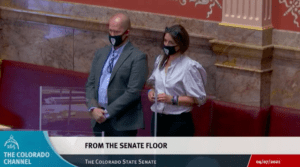
Skip Your Coffee, Give the Gift of Cannabis
This month, help us give 100 people access to Realm of Caring services. All it takes is a $10 monthly donation to provide access to one individual! To put it

This month, help us give 100 people access to Realm of Caring services. All it takes is a $10 monthly donation to provide access to one individual! To put it

Many clients come to Realm of Caring looking for help in improving their quality of sleep. The great news is that research is continuing to show us that cannabinoid therapy

As of May 2021, 37 states* in the US have legalized (or are in the process of legalizing) medicinal cannabis. Research has shown that it takes 18-24 months from the

Update on June 29th, 2021: Our collective efforts to oppose and veto HB21-1317 have failed. Governor Polis signed the bill and now our friends at Cannabis Clinicians Colorado and Buscher
What are Seasonal Allergies? Allergy symptoms occur when your immune system responds to foreign material, aka an allergen. That may be something you ingest, inhale, inject into your bloodstream,

“Go gray in May” represents bringing awareness to the brain tumors that affect nearly 700,000 individuals in the United States today. If you are affected by a brain tumor or

For many clients, being on cannabinoid therapy means living a life of quality with fewer pharmaceuticals. Over time, Realm of Caring has helped thousands of individuals to find their therapeutic

April is Diversity month, a month to recognize the rich and unique cultures and backgrounds that make up our society. It is also a time to draw attention to the

Colorado Governor Jared Polis and the Colorado General Assembly declared April 7th to be forever known as Charlotte Figi Day in 2020. This April 7th, 2021, Coloradans remembered Charlotte, who

Founded in 2013, Realm of Caring (RoC) is an independent 501c3 non-profit organization who serves anyone in need of more information about cannabinoid therapies. Through revolutionary research, innovative education, and
Open the following in new tabs if you:
If you are already a user: Client Login
If you are not, then register: Client Registration
Once Logged in, click below to refresh the page.